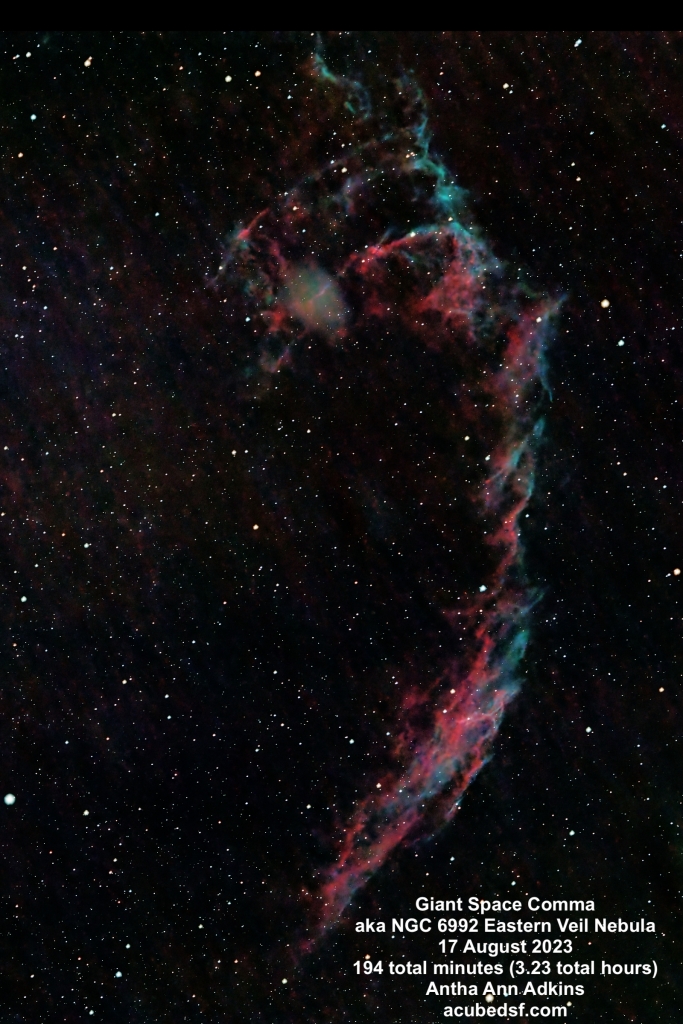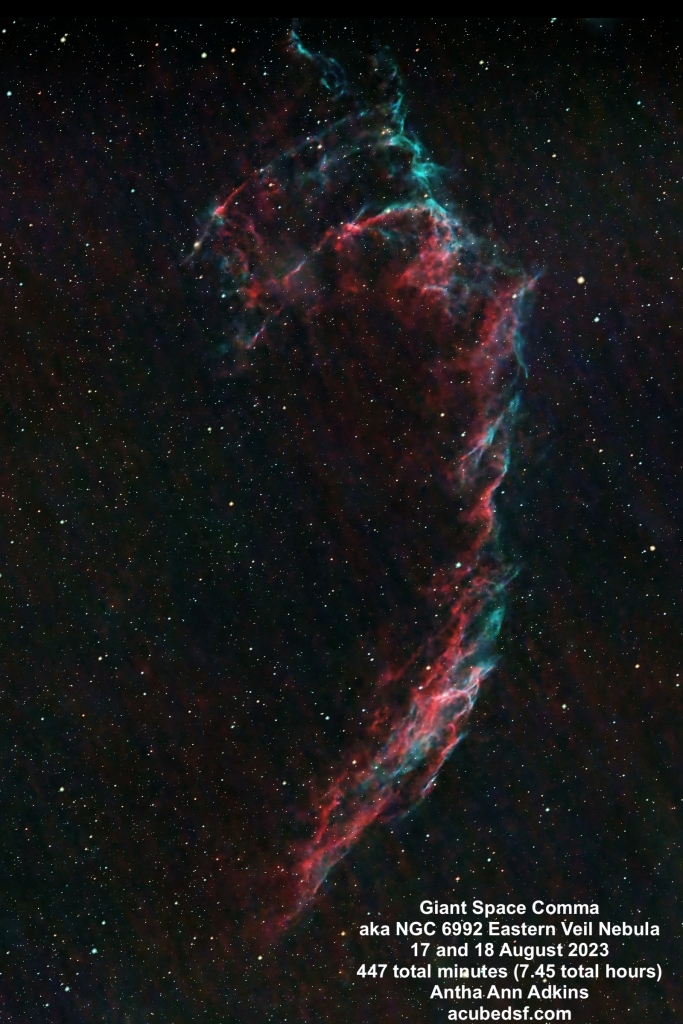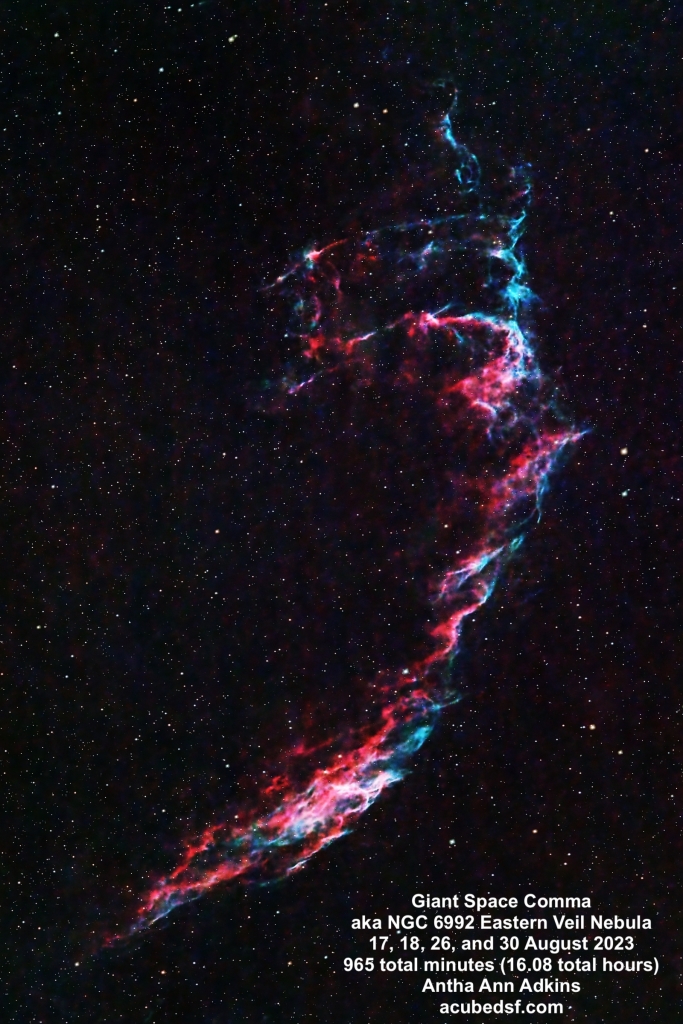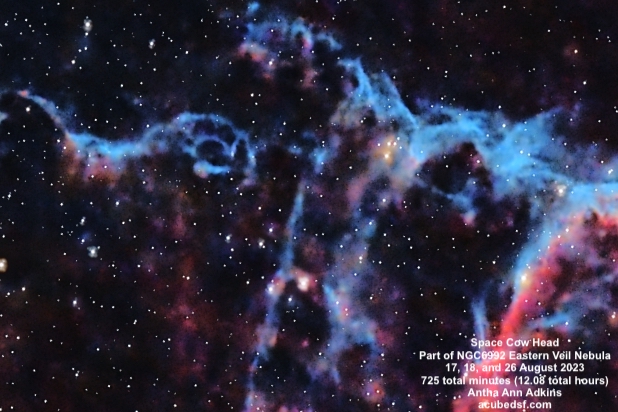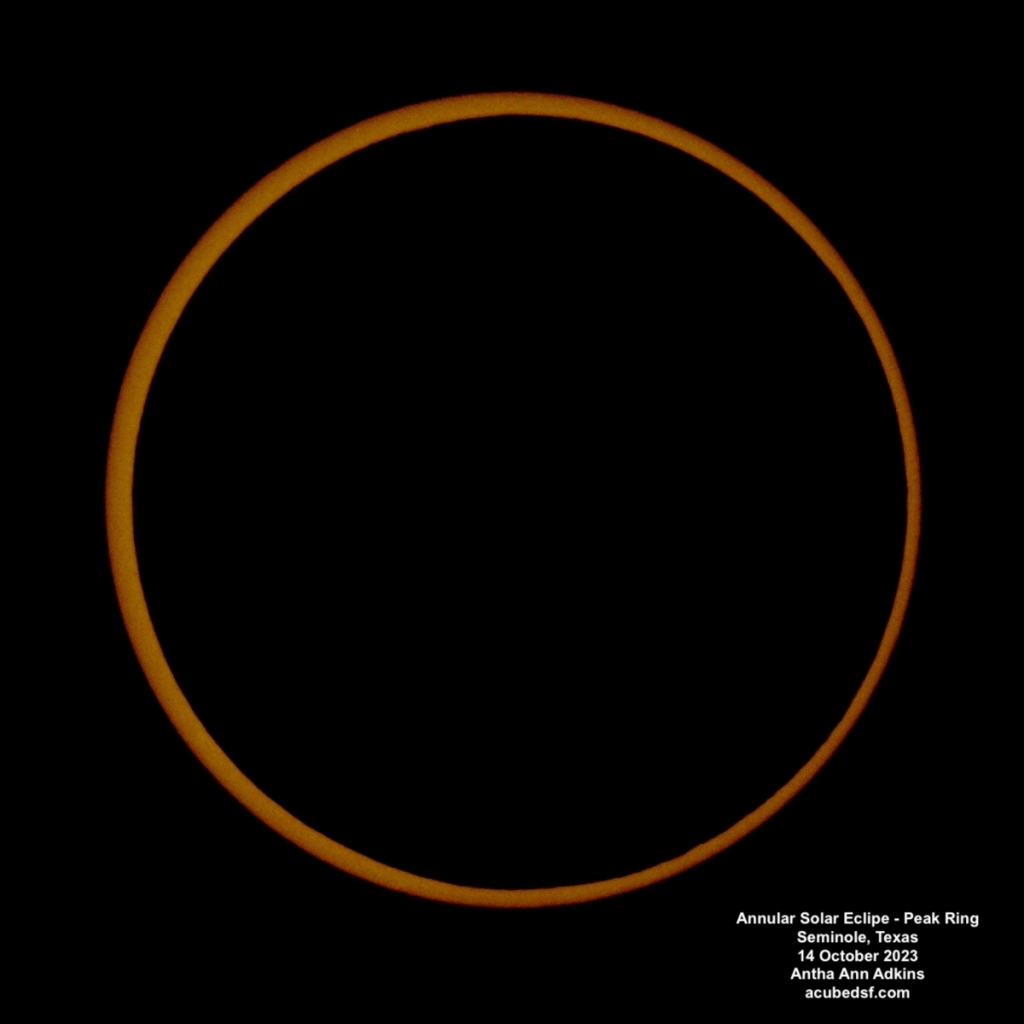
The Ring of Fire!!
Time lapse movie of the eclipse, with some extra dwell time for annularity.
When I planned our trip to see the October 14, 2023 annual solar eclipse months ago, I planned to see it from Roswell, New Mexico. As much as I would have liked to have seen it in my home state of Texas, the cloud probabilities were significantly better in Roswell. And, since the last time we tried to see a total solar eclipse it rained on us, having better cloud odds was the dominant factor in my decision making.
But, on Friday October 13, the cloud cover predictions for Roswell were not looking great. I made a spreadsheet of the cloud cover predictions for various cities using Astropheric, and my husband calculated how long it would take to drive to each one, and we decided to get up early and drive to Seminole, Texas instead. We couldn’t find any events planned there, but we did find a nice park.
We got up early and drove to Seminole. Although we did remember to account for the time zone change for driving back into Texas, we ended up running later than planned, and I eventually had to make a decision as to whether I wanted a complete time lapse movie or a good ring of fire picture – the choice was pretty obvious, and we kept driving to Seminole.
Seminole is in oil territory, and there were pumpjacks in the park, and we could smell the oil – giving us the true Texas eclipse viewing experience! Alas, there were no longhorns or bluebonnets to make it more iconic. Maybe in April?

I set up my telescope on my solar tracking mount, set up the intervalometer to take a picture every minute, and let it run. It worked great, which meant I could enjoy the experience with my husband and daughter: looking at cool shadows and viewing the eclipse through our eclipse glasses.
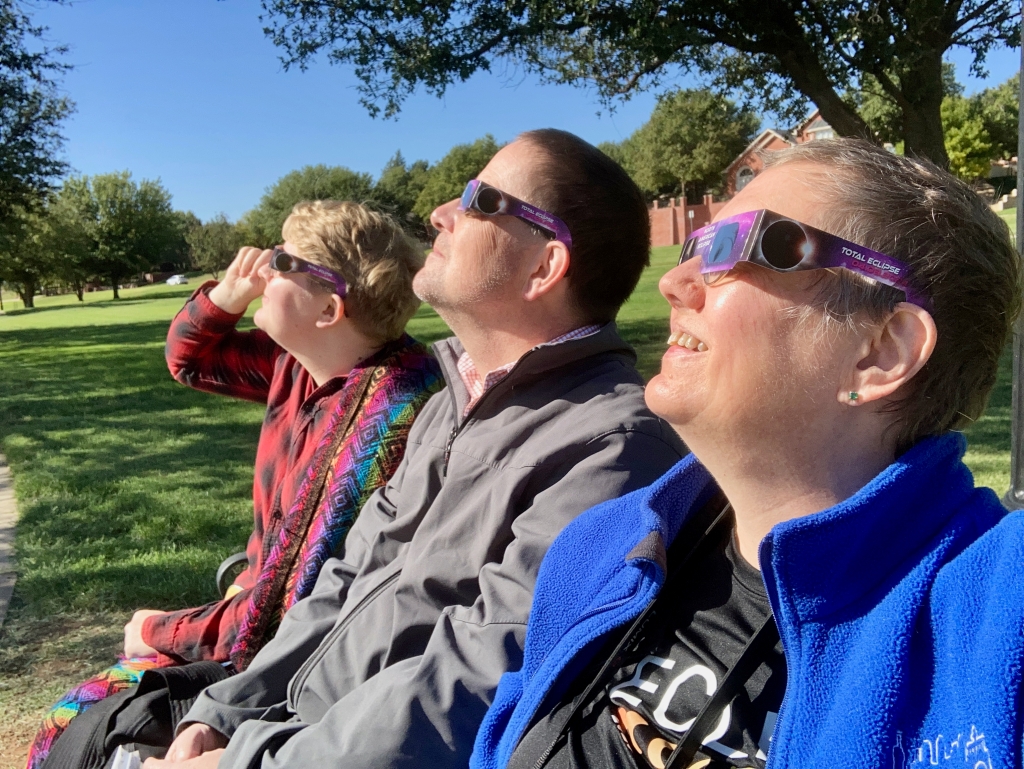

We noticed that it felt cooler than we would have expected on a sunny day – the sun wasn’t warming us like we’d expect. And it was dimmer than we would have expected as well.
It was really cool to see the sun change from a u shape to a c shape.
When we neared annularity, I took a bunch of extra pictures, trying to capture the Baily’s Beads effect where the Moon’s terrain breaks up the light of the sun into segments as the terrain blocks the light in some directions but not others. When we reached annularity, I also tried to get a good ring of fire picture.


With a long time for annularity (over four and a half minutes), I also spent some time looking at cool shadows and just looking (with my eclipse glasses) at the sun as an o shape. An amazing sight!
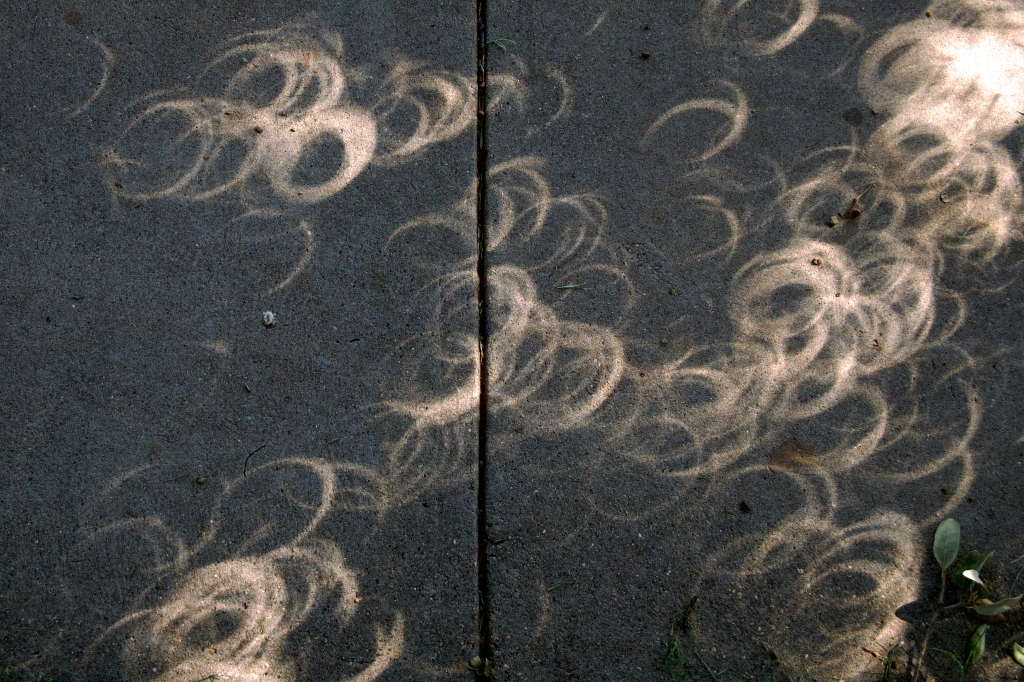
After annularity, we enjoyed seeing the sun come back out and feeling it get warm.
What a spectacular day!
Did you get to see the eclipse this year? Are you planning on seeing the total eclipse that also crosses Texas next year?
Camera geek info for solar pictures:
- Canon EOS 60D in manual mode, 1/200 second exposure, ISO 100
- Intervalometer
- Williams Optics Zenith Star 73 III APO telescope
- Williams Optics Flat 73A
- Thousand Oaks optical solar filter
- Sky-Watcher SolarQuest HelioFind tracking mount and tripod


